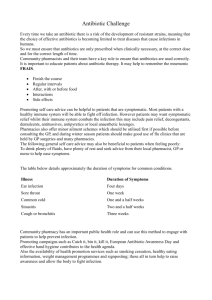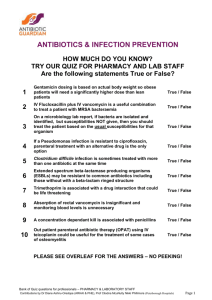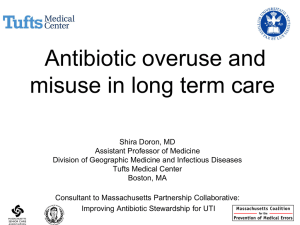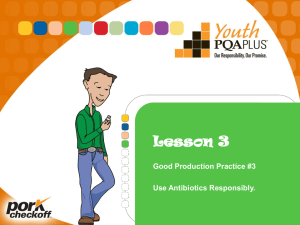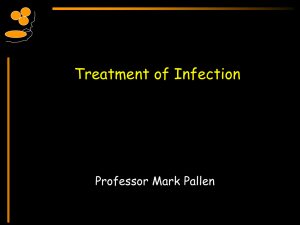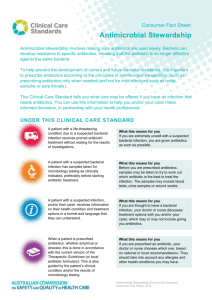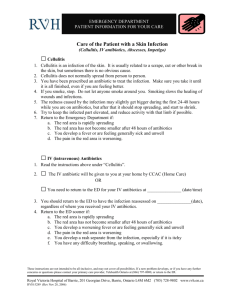Antibiotic Guardian: antibiotics and infection control quiz
advertisement
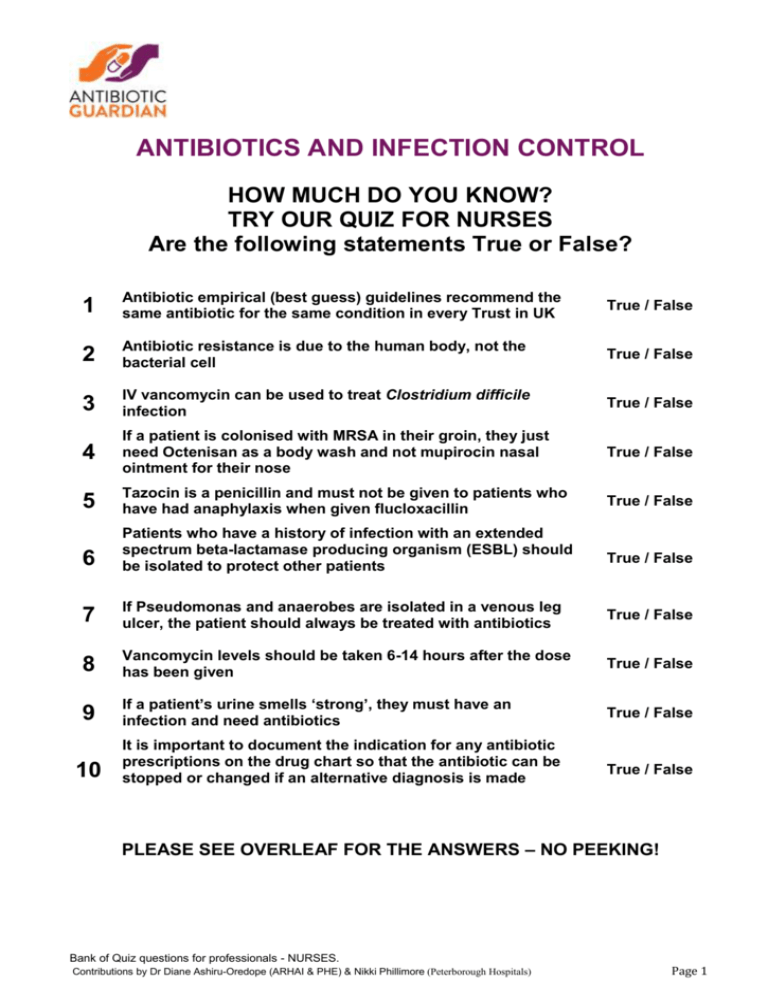
ANTIBIOTICS AND INFECTION CONTROL HOW MUCH DO YOU KNOW? TRY OUR QUIZ FOR NURSES Are the following statements True or False? 1 Antibiotic empirical (best guess) guidelines recommend the same antibiotic for the same condition in every Trust in UK True / False 2 Antibiotic resistance is due to the human body, not the bacterial cell True / False 3 IV vancomycin can be used to treat Clostridium difficile infection True / False 4 If a patient is colonised with MRSA in their groin, they just need Octenisan as a body wash and not mupirocin nasal ointment for their nose True / False 5 Tazocin is a penicillin and must not be given to patients who have had anaphylaxis when given flucloxacillin True / False 6 Patients who have a history of infection with an extended spectrum beta-lactamase producing organism (ESBL) should be isolated to protect other patients 7 If Pseudomonas and anaerobes are isolated in a venous leg ulcer, the patient should always be treated with antibiotics True / False 8 Vancomycin levels should be taken 6-14 hours after the dose has been given True / False 9 If a patient’s urine smells ‘strong’, they must have an infection and need antibiotics True / False 10 It is important to document the indication for any antibiotic prescriptions on the drug chart so that the antibiotic can be stopped or changed if an alternative diagnosis is made True / False True / False PLEASE SEE OVERLEAF FOR THE ANSWERS – NO PEEKING! Bank of Quiz questions for professionals - NURSES. Contributions by Dr Diane Ashiru-Oredope (ARHAI & PHE) & Nikki Phillimore (Peterborough Hospitals) Page 1 ANTIBIOTICS AND INFECTION CONTROL NURSE QUIZ – ANSWERS 1 Antibiotic empirical (best guess) guidelines recommend the same antibiotic for the same condition in every Trust in UK False – the resistance patterns are different in every trust and guidelines must reflect the expected organisms for each organisation 2 Antibiotic resistance is due to the human body, not the bacterial cell False – resistance is a mechanism developed by the bacterial cell 3 IV vancomycin can be used to treat Clostridium difficile infection False – IV vancomycin does not produce high enough levels in the GI tract so oral or rectal must be used 4 5 6 7 If a patient is colonised with MRSA in their groin, they just need Octenisan as a body wash and not mupirocin nasal ointment for their nose False – decolonisation must take place for body and nose if any part of the body is colonised Tazocin is a penicillin and must not be given to patients who have had anaphylaxis when given flucloxacillin True – Tazocin is a penicillin, as is flucloxacillin, and anaphylaxis is likely with both drugs if there is a history with either Patients who have a history of infection with an extended spectrum beta-lactamase producing organism (ESBL) should be isolated to protect other patients True – this is especially important if patients are incontinent If Pseudomonas and anaerobes are isolated in a venous leg ulcer, the patient should always be treated with antibiotics False – Pseudomonas may be a coloniser in a venous leg ulcer and stringent wound toilet should reduce the bacterial load. Using antibiotics can lead to resistance 8 Vancomycin levels should be taken 6-14 hours after the dose has been given False – Vancomycin levels should be taken immediately before the dose (a trough level) 9 If a patient’s urine smells ‘strong’, they must have an infection and need antibiotics False – smell is not an indicator of infection 10 It is important to document the indication for any antibiotic prescriptions on the drug chart so that the antibiotic can be stopped or changed if an alternative diagnosis is made True – not knowing the indication for an antibiotic makes it difficult for staff new to the patient to monitor or adjust the prescription Bank of Quiz questions for professionals - NURSES. Contributions by Dr Diane Ashiru-Oredope (ARHAI & PHE) & Nikki Phillimore (Peterborough Hospitals) Page 2
